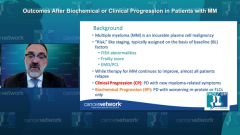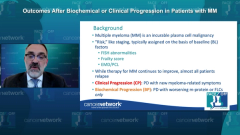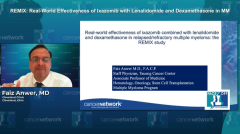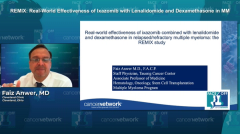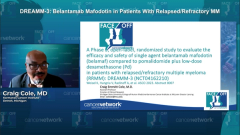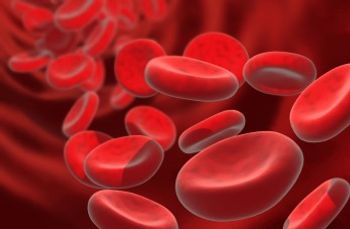
Cross Q&A: Clinical Application of Ixa-Len-Dex for Patients With MM
Experts on multiple myeloma discuss the clinical applications of ixazomib-lenalidomide-dexamethasone combination therapy.
Episodes in this series

Transcript:
Craig Cole, MD: Faiz, where do you think you’d use a regimen like this? I think this was a French study done a few years ago. How do you think this fits into the landscape these days?
Faiz Anwer, MD, FACP: I think this fits in with the more frail or [older] patients. A significant number of patients are not close to a major academic center. There’s a significant number of patients who don’t want to travel so frequently. They don’t want to be tied to a center where they have to come back for weekly therapy or injectable therapies. So I think it’s a good option in the second and third lines, where I will likely not use it in the fourth line or after that.
Craig Cole, MD: Did they have a frail vs non-frail analysis in this study?
Faiz Anwer, MD, FACP: This is a paper that was published in the American Society of Hematology, and I don’t think that there was a specific analysis on that. But a significant number of these patients are frail and older, aged 75 or 80 [years] plus. I think, in the practical sense, having the flexibility of reducing the dose without compromising the efficacy of the regimen has a space in our practice.
Jeffrey Zonder, MD: Craig, they did look at PFS[progression-free survival] in patients [older than] 80 [years] vs patients younger than that. And the PFS was similar. It was different by a few months. But it was quite similar. The patients [older than 80 years] had a PFS in this particular paper of about 17 months.
Craig Cole, MD: The ENSURE-1 trial [NCT05134441], which was the pooled analysis of the 3 big European IXA [ixazomib] trials, did have a frail vs nonfrail analysis…. It said the frail [patients] did a bit worse than the nonfrail patients, but that’s no big surprise because it’s always harder to treat our frail over our nonfrail patients.
Jeffrey Zonder, MD: I’m thinking, just to get back to the question you asked before, Craig, about where might you use this regimen.
I’m just thinking about how we [treat patients on the front line]. Maybe in a patient who, for one reason or another, ended up on Dara [daratumumab] maintenance after whatever their induction was. So a Dara monotherapy maintenance, where they haven’t had Revlimid [lenalidomide] and they haven’t had a proteasome inhibitor in a long time, and then they’re progressing. And you want to come back with an IMiD [immunomodulatory drug] and a proteasome inhibitor combo. And for whatever reason you would prefer this over Pom [pomalidomide] CAR [chimeric antigen receptor T-cell therapy]. For a frail patient who has been on Dar maintenance and [has relapsed], this might be a reasonable option.
Transcript is AI-generated and edited for clarity and readability.
Newsletter
Stay up to date on recent advances in the multidisciplinary approach to cancer.




